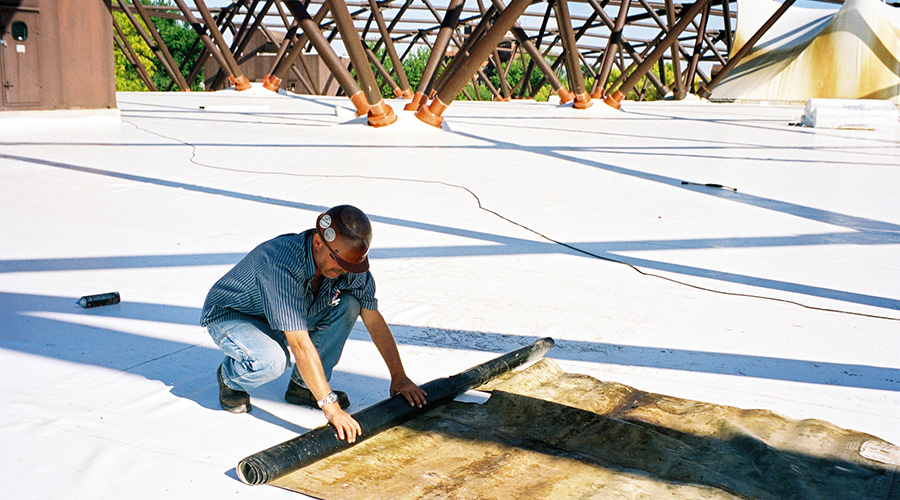Protect the Roof from Stress
Where the roof changes plane or terminates at a wall, metal edge, curb or other obstruction, it has the potential to be stressed. The vertical portion of the flashings is especially prone to damage by workers. Ropes hung over the side of the roof for boson chairs or swing-stage fall protection can abrade the flashing, causing tears and punctures. Unprotected roofing between access doors and ladders and mechanical equipment is subject to premature wear from foot traffic. Dropped tools and debris left behind can cause punctures and tears in the membrane.
The best way to protect a roof from this abuse is to limit the traffic on it. The most effective way of doing this is to lock the access door or hatch (if there is one) and monitor access to the roof. If roof access can't be limited, the next best thing is to provide protection at those areas that are the most vulnerable — around the HVAC equipment and the pathways to them. Adding walk pads around each unit will help to minimize the damage to the membrane from excessive wear. When swing stages or boson chairs are used, the contractor should be required to provide protection for the parapet walls. Plywood can be used to protect the field of the roof by spreading out the load on the membrane and by providing a physical barrier to flashing damage.
In asphalt-based roofing systems where the deck is not supported by the walls and the two are allowed to move freely, the flashings can be subject to stresses caused by differential movement between the deck and the parapet walls. The result will be diagonal wrinkles in the flashings that will eventually crack due to material fatigue. This is less a problem with single-ply membranes because their greater flexibility allows them to stretch and relax better with the building movement.
Unfortunately, once the roof is installed, there is no way to protect it from diagonal wrinkling. The only way to minimize damage from the building movement is by proper design of the flashings or by understanding the demands of the construction and to choose a different type of system, such as a single-ply. If the flashings have been installed without regard for the stresses from differential movement, which is common, inspecting the roof twice a year then patching the flashings as they crack is the only solution to the problem until the roof is replaced and the situation planned for.
Related Topics:














